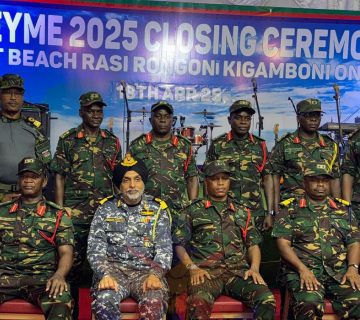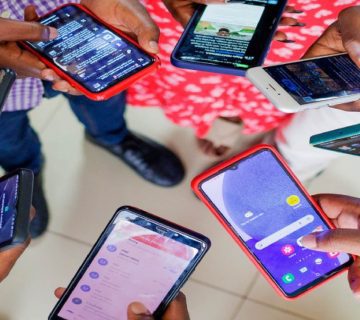The last decade has seen a surge in terrorist-related violence in Kenya, mostly by the al Shabab, an al Qaida affiliate in the Horn of Africa. Radicalization and recruitment statistics reveal a worrying trend. Young women and girls have become easy targets for these terrorist organizations, making them both a social and security problem.
In response to the spike in terrorism activities in the country, the Kenya government formulated counter-terrorism and deradicalization policies including, the Prevention of Terrorism Act (2012), Security Laws Amendment Act (2014), and the National Strategy to Counter Violent Extremism (2016) based on the (2006) Global Counter-Terrorism Strategy, to address these challenges. The Kenyan coastal region, which has borne the heavy burden of terrorism in Kenya, is predominantly Muslim. The role that women can play in countering violent extremism and promoting social cohesion at the community level is gaining more attention. Female religious clerics (also known as Ustadhas), could help change the narratives used by the extremists to lure girls and women into terrorism by countering beliefs and actions of people in the area, who support or use ideologically-motivated violence to further their aims.
In 2014, BBC reported the concerns of school heads in various communities along the Kenyan coast that al Shabab militants had infiltrated their institutions and recruited some youth. There have also been cases of women from the region who have been linked to radicalization and violent extremism. Hania Said Sagar, the widow of the assassinated Muslim Cleric, Sheikh Aboud Rogo, was reportedly financing, channeling information, and conspiring to commit acts of terrorism within Kenya. She was also involved in terror acts at Mombasa Central Police Station on September 11, 2016. In 2015, Rukia Faraj Kufugwa (a recruiter for al Shabab), was involved in grenade attacks and assassinations in Mombasa.
Fathima Azmiya Badurdeen and Paul Goldsmith in their article Initiatives and perceptions to counter violent extremism in the coastal region of Kenya argue that the situation relating to violent extremism in coastal areas has attracted many counter-violent extremism (CVE) organizations. Some have facilitated peacebuilding efforts, addressing ethnic and religious radicalization at the coast. These CVE programs are strengthened by initiatives that focus on mitigating key ‘push’ and ‘pull’ factors that support radicalization and violent extremism.
Many of the women and girls at the Kenyan coast who join terror groups voluntary do so for various reasons including, but not limited to, the search for a better lifestyle and employment; maintaining family relationships; and for various ideological, religious, political and economic aims. If these reasons were to be dealt with decisively, the number of women and girls join the terror groups, the feminization of terrorism would be reduced.
Role of Ustadhas
In Kenya, programs aimed at countering violent extremism are largely dominated by men. Despite efforts to have women at the core of CVE activities as articulated in the UN Women Strategic Note (2014-2018), Ustadhas have been marginalized from these activities, yet they could be valuable contributors to CVE. In particular, women shape community and family values during Madrasas; influence decision making of potential recruit; identify early signs of radicalization; encourage other women and girls to use different forms of media to promote counter-narratives; engage with local communities to report any signs on radicalization among the people; and collect information that may be useful in CVE. Ustadhas can also be mentors, community organizers; intervention officers; policy advisors; educators on issues related to CVE; and even healthcare professionals to victims of violent extremism.
Dr. Ally, the President of the Islamic Information Center, points out that there is nothing that prohibits a woman from being a leader in the Quran or communities from appointing female leaders. Specifically, Ustadhas could take part in inter- and intra-religious approaches to help counter violent extremism in the coastal areas of Kenya. They can work with non-governmental, non-partisan, non-political, and non-profit making organizations to address issues facing Muslim, and non-Muslim women at the Kenyan Coast, by advocating for their rights and creating a base where women and girls can undergo deradicalization and take part in CVE activities.
Building Resilience Against Terrorism, (BRAVE), a Muslim movement that works with the Council of Imams and Preachers of Kenya (CIPK) and the Supreme Council of Kenyan Muslims (SUPKEM), has adopted an inter-religious approach to combat religious extremism. BRAVE and CIPK focus on a prevention strategy based on inter-faith and intra-faith dialogues involving diverse actors. That counters the religious basis for radical Islamist ideology. This strategy will be strengthened if Ustadhas are included, especially in the Kenyan coastal region. BRAVE, for example, could engage these female religious teachers and mentors more through groups like BRAVE Ustadhas to complement activities of groups like the BRAVE Youth. This will aid in bringing Muslims, especially women and girls, together to speak out and act against violent extremism and terrorism.
While most Islamic institutions are headed by men, and hence their prominent role in CVE in Kenya, it is important to involve Ustadhas who have a strong appeal to an important constituency – girls and young women. A bigger role in the CVE scene will significantly contribute to a reduction of radicalization and recruitment into violent extremism. Ustadhas are well-positioned to point out signs of radicalization because of the nature of their work and constant interaction with girls and young women.
Mwachofi Julianna Chao, Research Department, the HORN Institute.
Photo: A section of BRAVE Women during a past training session conducted by the Center for Sustainable Conflict Resolution and the HORN Institute (Photo credit: HORN Institute)



